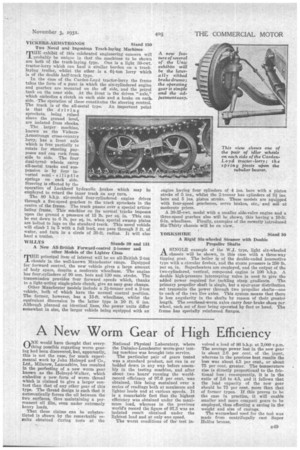A New Worm Gear of High Efficiency
Page 135

If you've noticed an error in this article please click here to report it so we can fix it.
(\NE would have thought that everykJ thing possible regarding worm gearing had been discovered, but, apparently, this is not the case, for much experimental work by John Holnyd and Co., Ltd., Milnrow, Lancashire, has resulted in the perfecting of a new worm gear known as the Holroyd-Walker, which embodies a new form of worm thread which is claimed to give a larger contact than that of any other gear of this type. The thread design is such that it automatically forces the oil between the two surfaces, thus maintaining a permanent oil film, even under extremely heavy loads.
That these claims can be 'substantiated is shown by the remarkable results obtained during tests at the National Physical Laboratory, where the Daimler-Lanchester worm-gear testing machine was brought into service.
The particular pair of gears tested was a standard product, not run in or bedded down in any way before assembly in the testing machine, and after about two hours' running the worldrecord efficiency of 97.6 per cent, was obtained, this being sustained over a series of readings both at maximum and lighter loads and at various speeds. It is a remarkable fact that the highest efficiency was obtained under the maximum load, whereas in the previous world's record the figure of 97.3 was an isolated result obtained under the lightest load and at only one speed.
The worst conditions of the test in
volved a load of 86 b.h.p. at 2,000 Limn. The average power lost in the new gear is about 2.6 per cent, of the, input, whereas in the previous best results the loss was about 4.5 per cent., or about 75 per cent. greater. The temperature rise is directly proportional to the frictional loss ; consequently, it is in the ratio of 2.6 to 4.5, and it follows that the load capacity of the new gear should be 75 per cent, more than that of former types. If this proves to be the case in practice, it will enable smaller and more compact gears to be employed, thus effecting a saving in the weight and size of casings.
The worm-wheel used for the test was made from centrifugally east Super Holfos bronze,








































































































































































































































